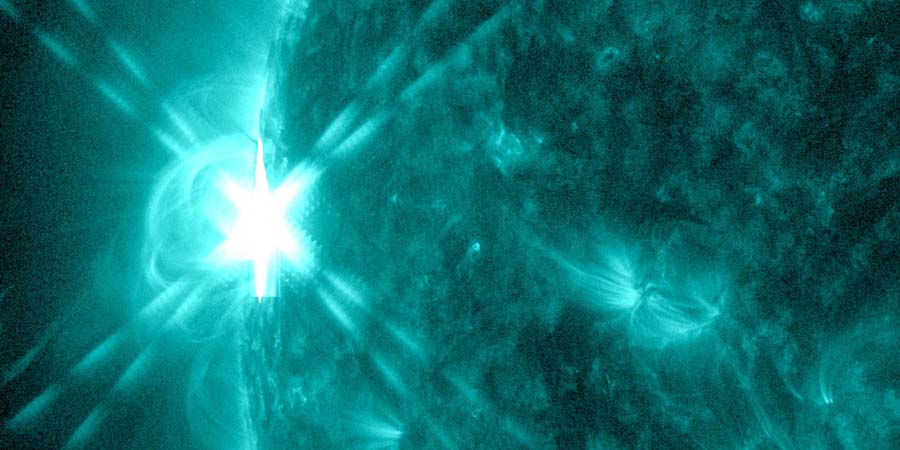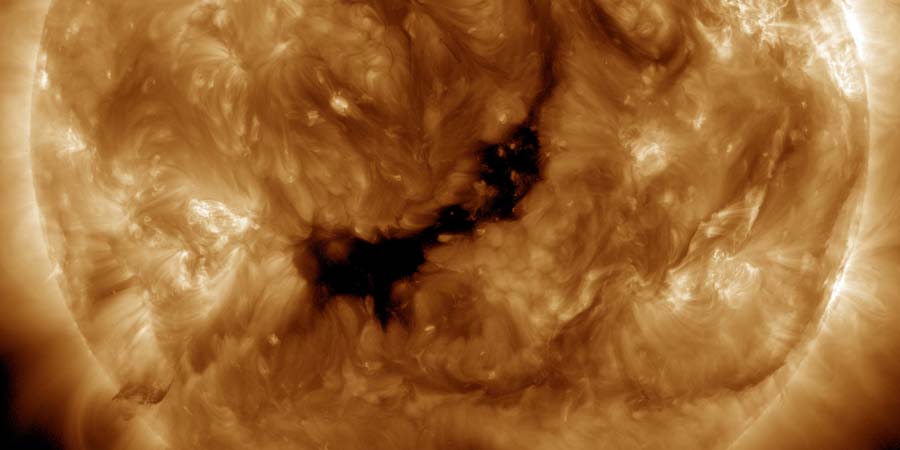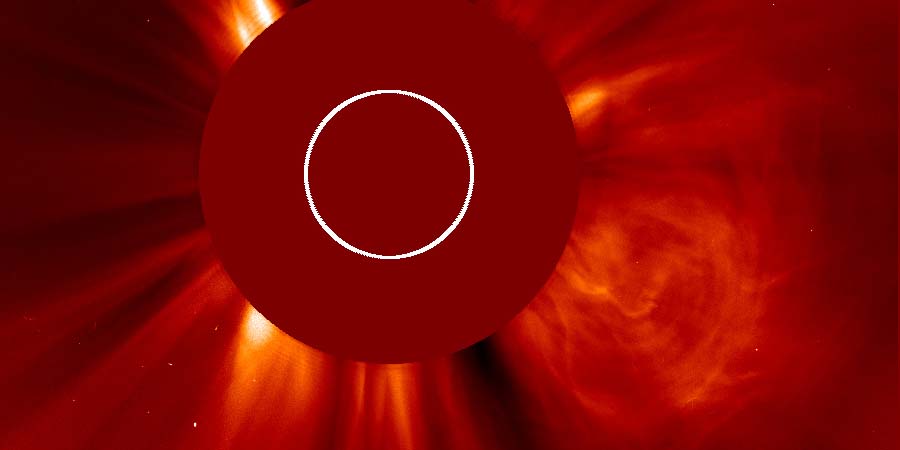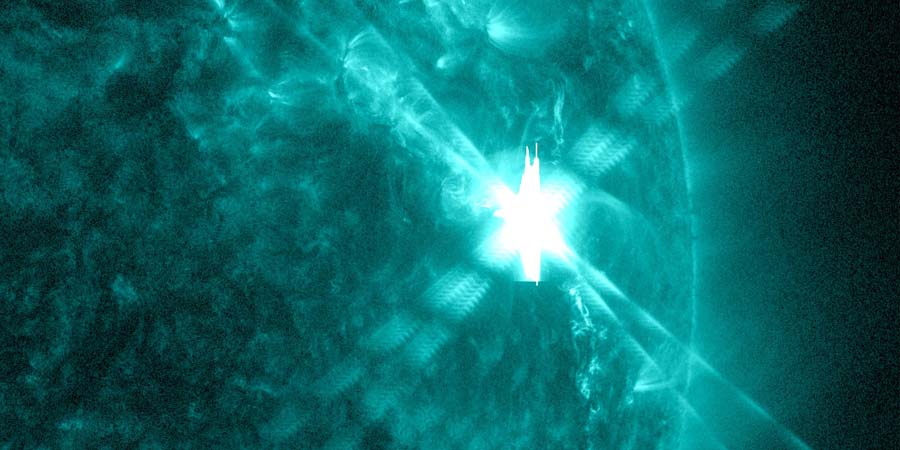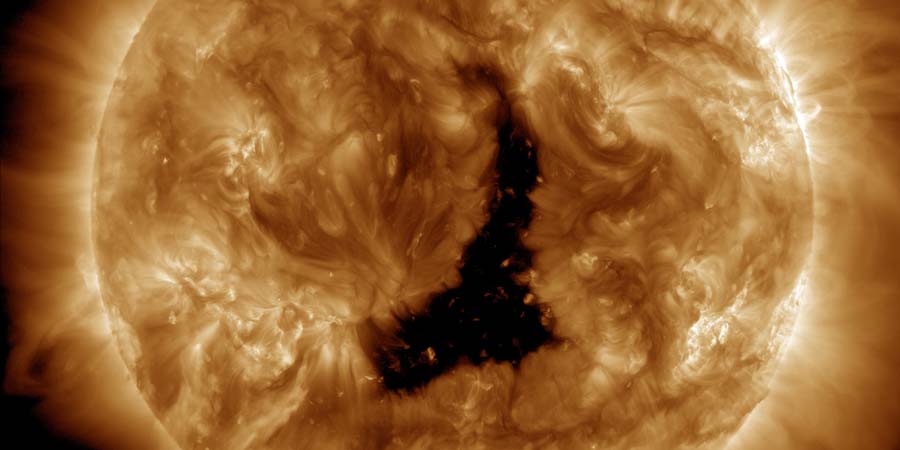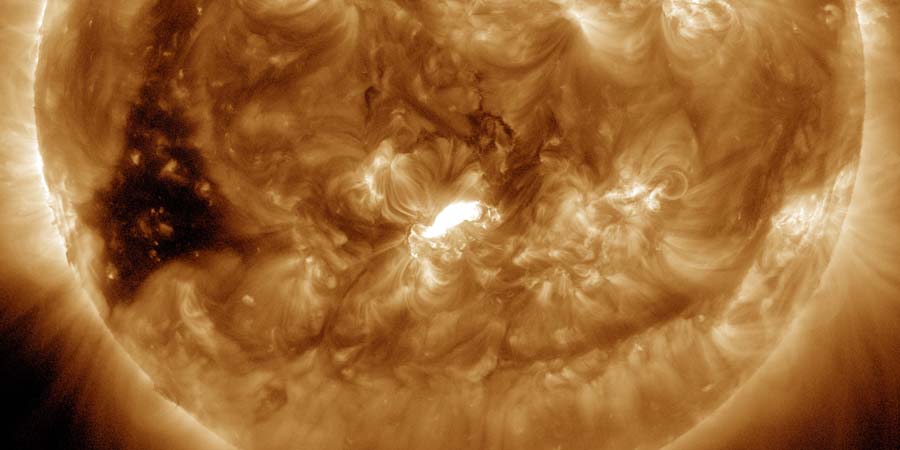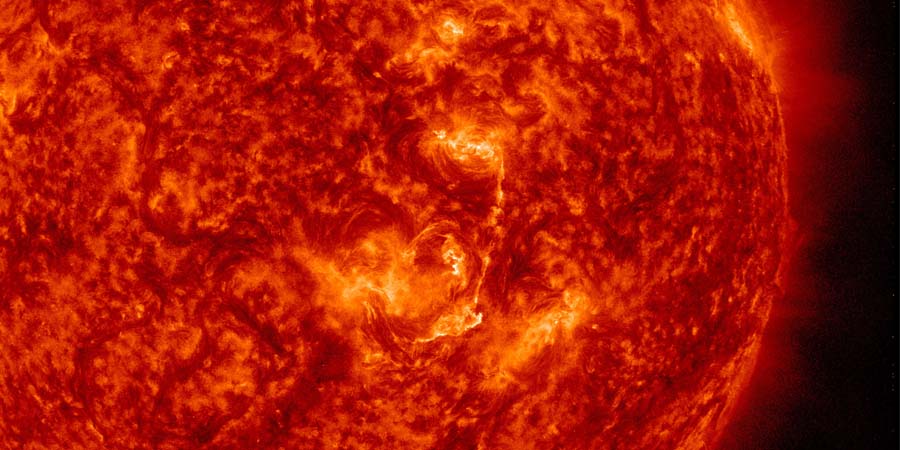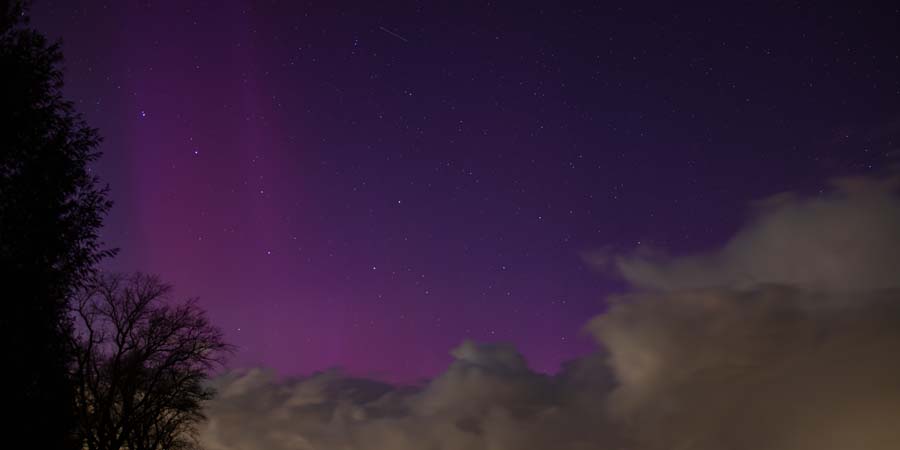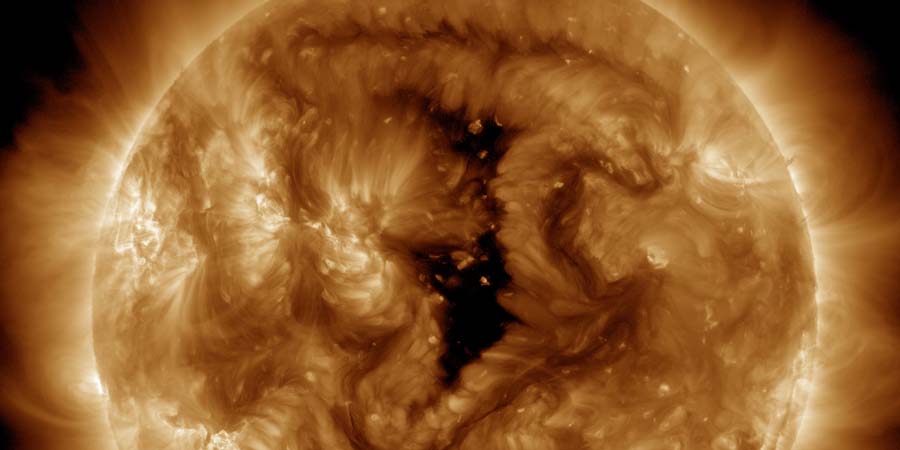Latest news updates Subscribe
Major X5.0 solar flare
lunedì, d.C. gennaio PM 15:16 UTC
Happy New Year to all of our visitors and fans! How do we celebrate that? With a major solar flare of course! The Sun was kind enough to produce some spectacular fireworks yesterday just two hours before UTC midnight. It was a major X5.0 (R3-strong) solar flare that peaked at 21:55 UTC. Sunspot region 3536 is the source of the eruption which is just rotating into view on the east limb. This is actually the return of sunspot region 3514 which produced an X2.8 solar flare during the previous solar rotation.
Coronal hole faces Earth
venerdì, d.C. dicembre PM 18:09 UTC
Solar activity has been fairly quiet the past few days as there are currently no noteworthy sunspot regions on the earth-facing solar disk. However, a different kind of interesting solar feature is currently staring right at us on the earth-facing solar disk and that is a trans-equatorial coronal hole.
Earth-directed CME, M6 solar flare
venerdì, d.C. dicembre PM 19:21 UTC
Yesterday's X2.8 solar flare (which is the strongest solar flare since 2017) came from sunspot region 3514 which is rotating towards the west limb. It became clear quite soon following the event that it would be eruptive but is there a chance that the resulting coronal mass ejection (CME) arrives at Earth? Keep on reading for the answer!
Major X2.8 solar flare
giovedì, d.C. dicembre PM 17:34 UTC
A major X2.87 (R3-strong) solar flare just peaked at 17:02 UTC. Sunspot region 3514 is the source of the eruption.
Coronal hole faces Earth
sabato, d.C. dicembre PM 15:37 UTC
The geomagnetic storm which was the result of a coronal mass ejection impact from the M9.8 solar flare has now subsided. The north-south (Bz) component of the interplanetary magnetic field is pointing northwards which is preventing any kind of geomagnetic unrest at the moment. We did peak at the strong G3 geomagnetic storm level which caused some very nice auroral displays at lower latitudes than usual. So does that mean we need to wait for weeks and weeks before the next geomagnetic storm? No! A very large coronal hole is currently facing our planet sending a high-speed solar wind stream towards us.
M9.8 solar flare with earth-directed CME
mercoledì, d.C. novembre PM 17:24 UTC
A near X-class (M9.8) solar flare (R2-moderate) erupted yesterday at 19:50 UTC. It was sunspot region 3500 which was pretty much on the center of the earth-facing solar disk at the time that was the source of this eruption.
Coronal mass ejection impact expected on 11 November
venerdì, d.C. novembre PM 16:17 UTC
A full halo Coronal Mass Ejection (CME) left the Sun around 12 UTC on 9 November. The CME was the result of a filament eruption close to the center of the earth-facing solar disk.
Strong geomagnetic storm sparks aurora all over Europe
lunedì, d.C. novembre PM 17:22 UTC
Wow! Now that was what you call an almighty storm! Two distinct coronal mass ejection arrivals yesterday sparked a geomagnetic storm that peaked at the strong G3 (Kp7) level. This sparked spectacular and vivid aurora displays which were seen from all over Europe, southern parts of Australia and New Zealand. We admit that we were actually surprised by how far south in Europe people were spotting the aurora. We have seen images from pretty much every European country and even as far south as Turkey! Yes! Turkey! Incredible stuff! This amazing aurora display is yet another example of why you need to remain vigilant during coronal mass ejection arrivals! You never know when that chance comes that you will be able to spot the aurora from your own back yard or balcony!
Coronal hole faces Earth
venerdì, d.C. ottobre PM 18:30 UTC
It feels like it was ages ago that we made a news article where we talked about a good-old reliable coronal hole but today is the day as we actually have a fairly large coronal hole facing our planet today!
New forecast predicts quicker, stronger peak of solar activity
giovedì, d.C. ottobre PM 16:53 UTC
Solar activity has been really low the past few months, much lower than one would expect this close to solar maximum. Strange as Solar Cycle 25 started of with a very decent amount of solar activity signaling that Solar Cycle 25 would likely surpass Solar Cycle 24 in terms of strength. So where are we right now? Did we pass solar maximum? Is this a temporary lull? Is Solar Cycle 25 maybe not going to be as strong as Solar Cycle 24? A new experimental model from the NOAA’s Space Weather Prediction Center (SWPC) might provide an answer...
Ultime notizie
Ultimi messaggi dal forum
Supporta SpaceWeatherLive.com!
Molte persone vengono su SpaceWeatherLive per seguire l'attività del Sole o sapere se ci sia la possibilità di vedere l'aurora, ma a maggior traffico corrispondono costi maggiori. Considerate una donazione se vi piace SpaceWeatherLive così che possiamo mantenere online il sito web!

Notizie sul meteo spaziale
| Ultimo brillamento X | 2024/05/11 | X1.5 |
| Ultimo brillamento M | 2024/05/13 | M6.6 |
| Ultima tempesta geomagnetica | 2024/05/12 | Kp7 (G3) |
| Giorni senza macchie | |
|---|---|
| Ultimo giorno senza macchie | 2022/06/08 |
| Media mensile Numero di Macchie Solari | |
|---|---|
| aprile 2024 | 136.5 +31.6 |
| maggio 2024 | 144.3 +7.8 |
| Last 30 days | 175.2 +82.9 |
